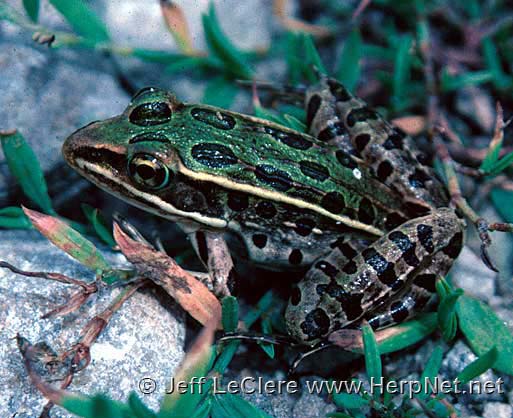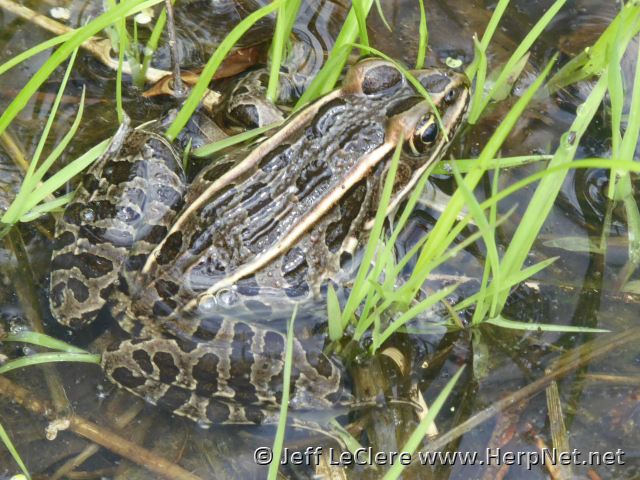Northern Leopard Frog (Lithobates pipiens)
Alternate names: Rana pipiens
by Jeff LeClere
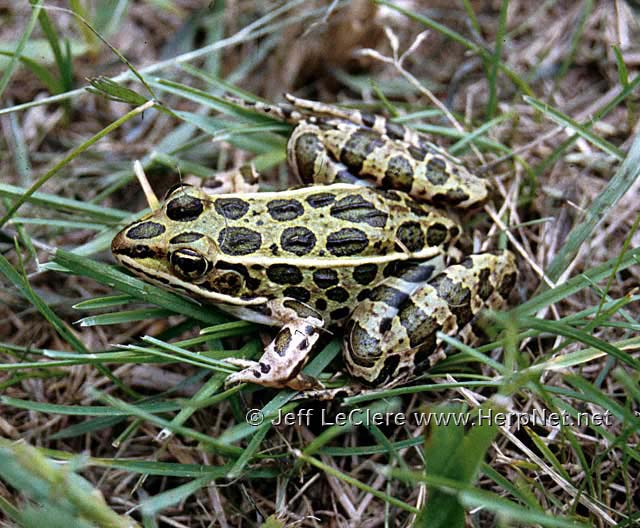
Northern leopard frogs, Lithobates pipiens, calling.
Status
Species of Greatest Conservation Need. A valid fishing license is required to possess this species for bait or food. Common throughout Iowa, although we would like reports of the “burnsi phase” of this species.
Description
The leopard frog is the most familiar frog in Iowa. They may grow to 3 1/2 inches body length. They may be varying shades of green or brown. There are round black spots scattered randomly about the back and on the sides and usually one on the snout. They belly is plain white. There are two light (sometimes golden) complete dorsolateral ridges down the back. There are spots on the forelimbs and tiger stripes or bars on the hind legs. The groin and thighs have a greenish (very rarely yellowish) wash.
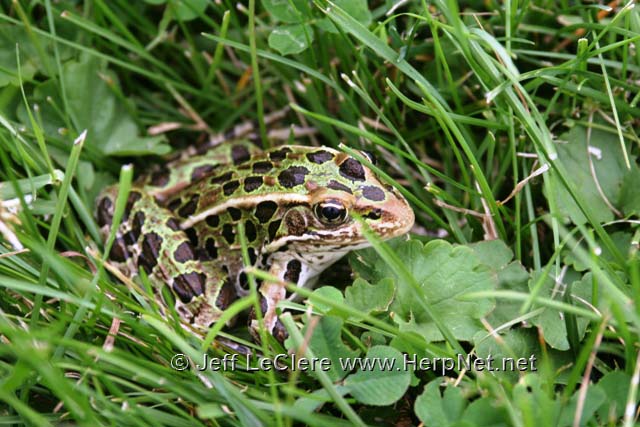
Brown specimens of the leopard frog differ from pickerel frogs by having round spots scattered randomly about the about the back, and a greenish wash on the thighs. Also pickerel frogs are found only in the trout streams of extreme eastern Iowa. One variant of the northern leopard frog is found in Iowa; the burnsi form is found from time to time in the state. It is brown or green with no dorsal spots. It has spots or bars on the limbs, and may have black stippling on the back and sides.
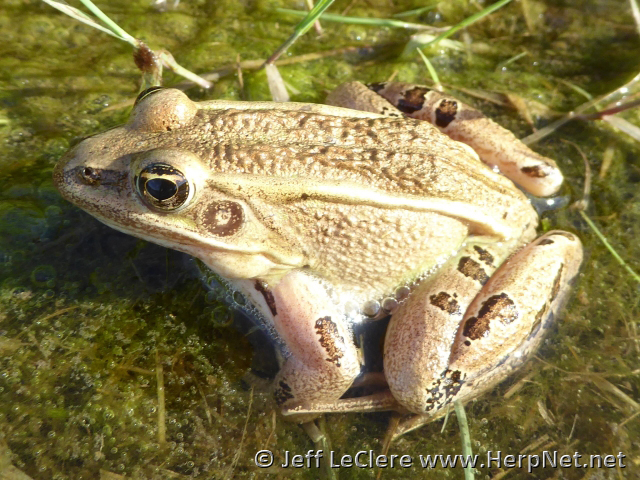
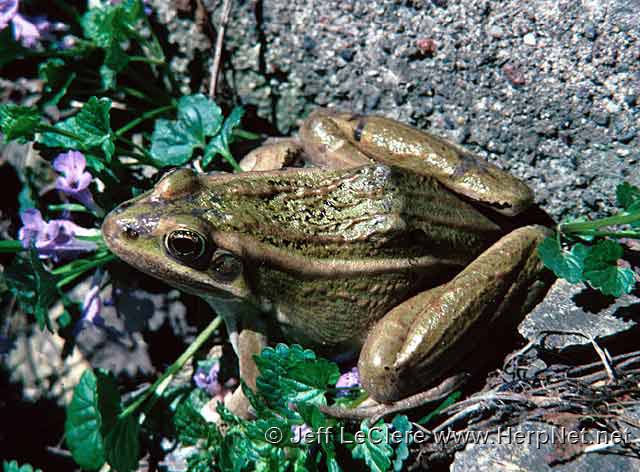
Subspecies
There are no subspecies of the northern leopard frog, Lithobates pipiens.
Range
The northern leopard frog is found statewide in Iowa.
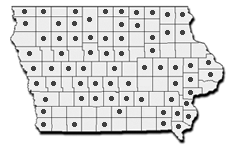
Habitat
The northern leopard frog is found near all water types. Lakes, ponds, rivers, streams, large and small wetlands, even homemade ponds. Leopard frogs move considerable distances from water, especially in wet grasslands or damp woodlands.
Habits
Northern leopard frogs breed in March and April. Sometimes males call while underwater. They produce a low pitched snore often followed by a chuckling noise, or a deep “urr, urr, urr”. A single female may lay 3,000 to 5,000 eggs in a round mass. The females may all lay eggs in one portion of the pond. Tadpoles metamorphose in about three months.
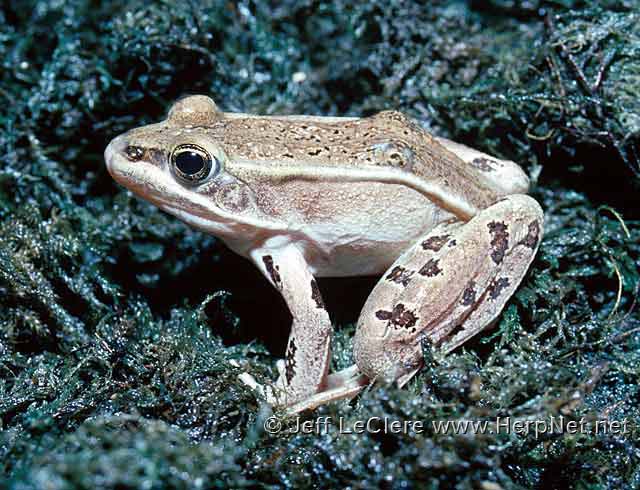
During rainy weather, (especially during spring or fall migrations) great numbers of these frogs are seen crossing the roadway, especially near wetlands. So many may be on the road that it causes a slick driving hazard. They may also venture into backyards and move into outdoor ponds or swimming pools. When they move far from a body of water, they may absorb dew to keep them moist. They overwinter in deep water. These frogs are declining due to habitat destruction, additions of roadways, pollution, disease, and other factors. Also, they are collected for biological supply houses, anglers use them for bait and any medium or large sized carnivores prey upon them.
Food
Northern leopard frogs consume insects, earthworms, and other invertebrates.
